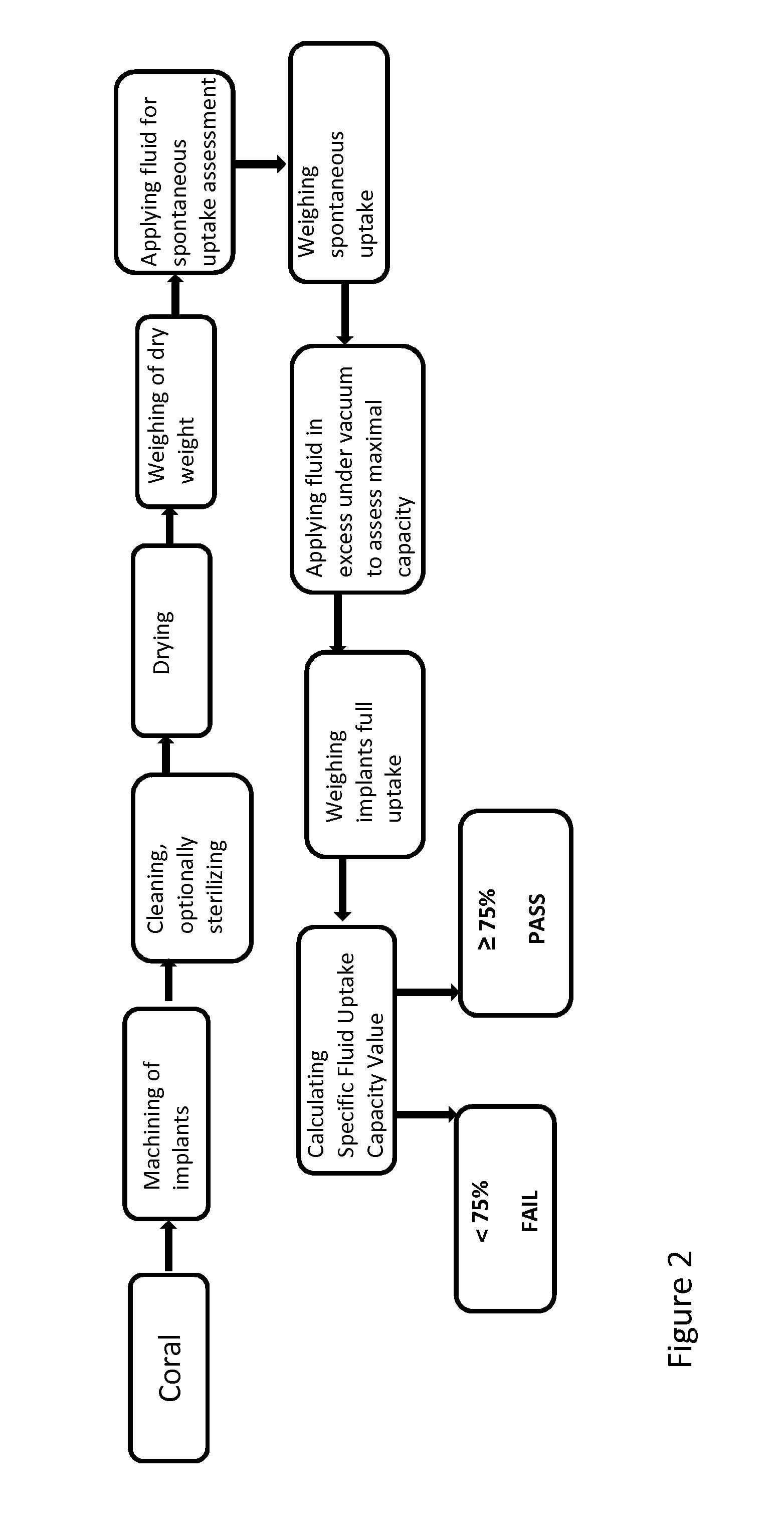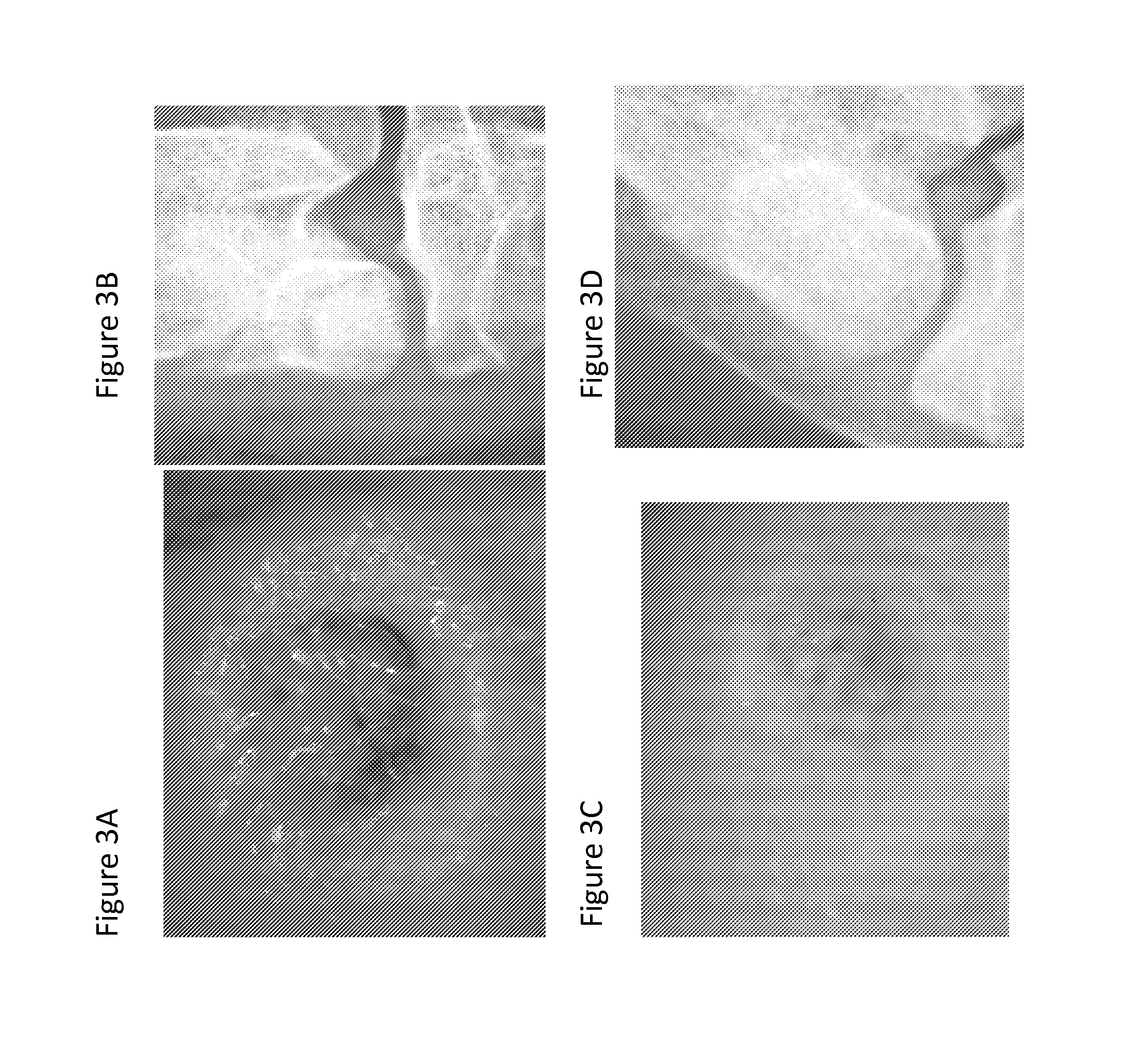Biomatrix Hydrogels and Methods of Use Thereof
- Summary
- Abstract
- Description
- Claims
- Application Information
AI Technical Summary
Benefits of technology
Problems solved by technology
Method used
Image
Examples
example 1
Physical Properties Variability in Coralline-Based Solid Substrates of this Invention
Materials and Methods
[0319]A diamond disk saw was used to remove an outer coral layer, and large sections from which representative smaller sections of desired dimensions were cut from the coral block.
[0320]Coral from the hydrocoral Porites lutea which has an average pore size of 100-150 μm was harvested from various regions within a coral. The coral was evaluated visually for its appearance, density, and porosity. Coral was then optionally immersed in 5% sodium hypochlorite for removal of external organic tissue. Briefly, coral was first exposed to a 5% sodium hypochlorite solution for 30 minutes, 3 exchanges at temperature range RT at 50° C., and sub-atmospheric pressure using vacuum pressure ranging from 0.2-0.00001 Bar. The coral sections were then exposed to a 10% solution of hydrogen peroxide for 15 minutes at a temperature range of from RT-50° C., and subatmospheric pressure using vacuum pres...
example 2
Establishing a Screening Protocol for Coralline-Based Solid Substrates
[0329]Based on the findings in Example 1, a screening protocol may be established to select for an optimized coral-based solid substrate for promoting cell or tissue growth or restored function. FIG. 2 provides a flow diagram of an envisioned screening protocol process. Coral samples are identified, isolated and machined to a desired size and shape, or assessed in blocks. The samples are then cleaned and optionally sterilized, then dried. The coral sample being assessed may be dried under vacuum and / or heated toward this end.
[0330]A dry weight for each sample may then be recorded.
[0331]Fluid as described herein is added to each assay container in an approximately 1:1 ratio or slightly more, i.e. equal to or slightly more than the size of the sample in mm as compared to the volume of fluid in ml is added to the container.
[0332]The sample may then be weighed and a spontaneous fluid uptake value is determined.
[0333]S...
example 3
Improved Solid Substrate Incorporation as a Function of Certain Physical Properties in Coralline-Based Solid Substrates of this Invention
[0337]In order to assess the consequence of the phenotypic variability in blood absorption in the plugs of Example 1, coral plugs were prepared using a standard production method including three hypochlorite washes, hydrogen peroxide treatment and multiple double distilled water washes. Their spontaneous fluid uptake and total fluid uptake values were determined as described in Example 2, with water being the sample fluid assessed in this case. Sample implants exhibiting a spontaneous fluid uptake value of more than 75% were also checked for their spontaneous blood uptake ability.
[0338]Implants were graded as red, white, and intermediate, with intermediate referring to regions that are red and regions that remain white. Implants were placed in each goat knee so that each goat received an implant characterized by a spontaneous fluid uptake value of ...
PUM
| Property | Measurement | Unit |
|---|---|---|
| Fraction | aaaaa | aaaaa |
| Time | aaaaa | aaaaa |
| Diameter | aaaaa | aaaaa |
Abstract
Description
Claims
Application Information
 Login to View More
Login to View More - R&D
- Intellectual Property
- Life Sciences
- Materials
- Tech Scout
- Unparalleled Data Quality
- Higher Quality Content
- 60% Fewer Hallucinations
Browse by: Latest US Patents, China's latest patents, Technical Efficacy Thesaurus, Application Domain, Technology Topic, Popular Technical Reports.
© 2025 PatSnap. All rights reserved.Legal|Privacy policy|Modern Slavery Act Transparency Statement|Sitemap|About US| Contact US: help@patsnap.com



